
Photos: Formula Motorsport Ltd
FIA F3 had a three-way title fight at the 2023 finale, as drivers at smaller teams starred more than ever before
In total 27 drivers this year managed to last the whole season in FIA Formula 3, which is the most since the championship was created in 2019 as a successor to GP3 on the Formula 1 support bill. There were 10 different race winners, seven different drivers took pole over the nine rounds and 18 different names made the podium. And the driver who scored the most points didn’t rely on being fastest, but rather the most consistent in such a closely-packed field.
He even admitted as such mid-season, as he built a gap at the top of the standings to his opposition. But since he didn’t feature on the podium’s top step after April, lots of other drivers were appearing in the spotlight once the season really got going and had more eyes on it. But aside from the wins, what made drivers stand out out to Formula Scout’s writers in the paddock this season, and who stood out the most?
Key Percentage of team’s points scored (TP), Average qualifying position (QA), Laps led (LL)
10. Jonny Edgar BRITAIN MP Motorsport
13th in standings, 55 points (1 win, 1 podium) – TP 28%, QA 12.1 (12th), LL 15 (8th)
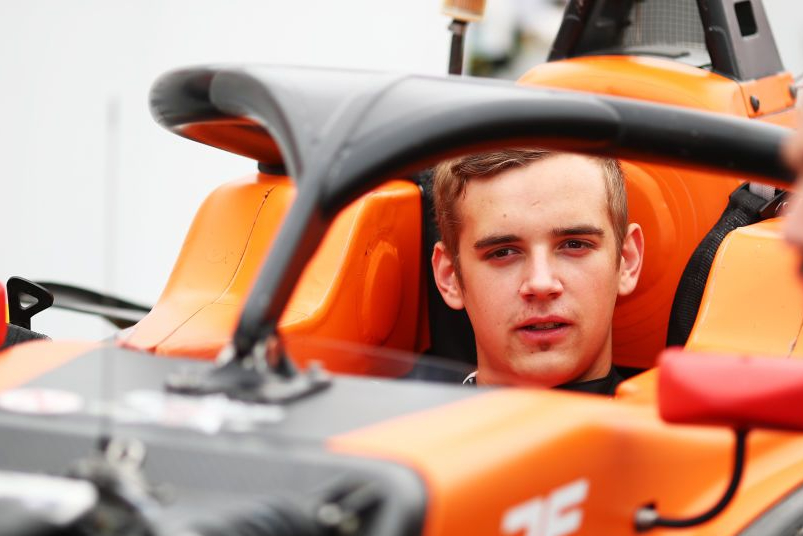 Ida Wood (4th): More than anything, Edgar’s got an approach that serves him well when things aren’t going his way as well as it does when he has a car that he can take to a podium position. He may have had to wait until the final race of 2023 to make that podium happen, and not actually spent a single lap in the top three prior to that, but was one of seven drivers to win a feature race this year and the timing and significance of doing that can not be understated given the Monza finale was set to be Edgar’s final F3 race and he needed to advertise his abilities for whatever comes next.
Ida Wood (4th): More than anything, Edgar’s got an approach that serves him well when things aren’t going his way as well as it does when he has a car that he can take to a podium position. He may have had to wait until the final race of 2023 to make that podium happen, and not actually spent a single lap in the top three prior to that, but was one of seven drivers to win a feature race this year and the timing and significance of doing that can not be understated given the Monza finale was set to be Edgar’s final F3 race and he needed to advertise his abilities for whatever comes next.
Peter Allen (11th): Edgar had an impressively consistent end to a disrupted 2022 season but, after losing Red Bull backing, the move to MP Motorsport didn’t really work out. He was shaded fairly comprehensively by team-mate Franco Colapinto – that was, until he took MP’s only feature race win of the year at Monza, managing a typically frantic encounter in what might be his last race in junior single-seaters.
9. Luke Browning BRITAIN Hitech GP
15th in standings, 41 points (1 fastest lap, 1 podium) – TP 24%, QA 13.4 (13th)
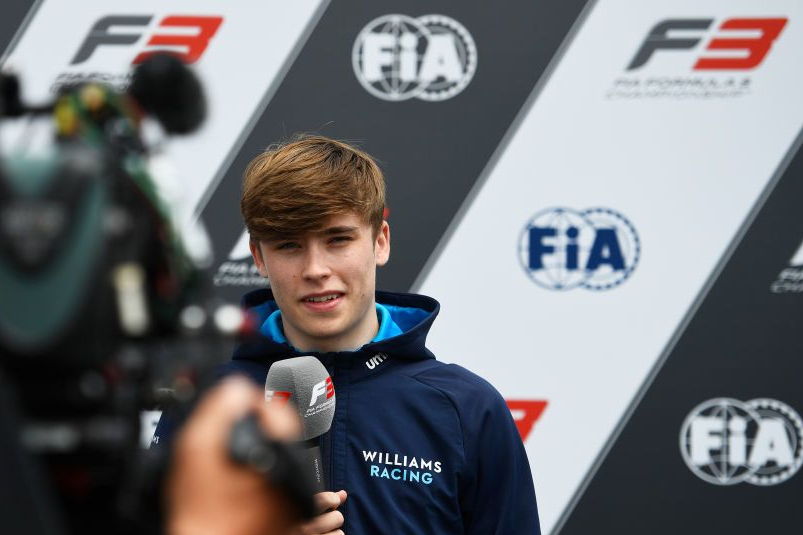
Photo: Getty Images
PA (7th): Browning was making a big step up at the start of the year but immediately marked himself out as one of the most spectacular talents in the F3 field. That his level of experience didn’t match his enthusiasm behind the wheel surely led to a few missed opportunities, and the way that his season tailed off in parallel to those of his team-mates left him far lower in the standings (15th) than he ought to have been. He would certainly deserve the chance to return for a second season.
Alejandro Alonso (9th): A season of ‘what could have been’. Despite his little experience in the Dallara F3 2019 or any similar machinery, Browning proved himself since day one. The results of the early rounds made one think he would challenge for victories of the second half of the season. However, three points in Spa-Francorchamps’ sprint race was all he scored then. The lack of better results was not always his fault, but that is not enough in a results-based competition. Notwithstanding, Browning is one to follow closely in 2024. If he puts it all together, he could surely be a title contender.
8. Dino Beganovic SWEDEN Prema
6th in standings, 96 points (1 fastest lap, 4 podiums) – TP 29%, QA 9.6 (8th), LL 6 (15th)

Photo: Prema
Roger Gascoigne (5th): Reigning Formula Regional Europe champion Beganovic started the season strongly, having the better of his more experienced Prema team-mates across the first four weekends, but thereafter his season rather fell apart, with the exception of an excellent second in Budapest. He took more feature race podiums (four) than anybody else, including another second at Monaco. Based only on Sundays, he would have been third in the championship, but he was let down by his Saturday results. Indeed, he scored fewer sprint race points (17) than anybody in the top 14. At both Silverstone and Monza he failed to set a qualifying time – once his own making, once due to engine problems beyond his control – putting him on the back foot for both races. In FREC he needed almost a full season to get up to speed, and, assuming he returns, he should shine in his sophomore year in F3.
IW (9th): Even when getting big results, there’s a bit of anonymity with Beganovic that has never convinced me that with on-track performances alone he can make it to Formula 1 despite proving himself at every level so far. He finished 23 points behind the leading Prema driver in the standings, which can be considered either a huge amount or a fair gap when taking into consideration moments of misfortune. But Beganovic just did not qualify at the front enough, while driving for the fastest team, and failed to win a race. You have to look outside the top 10 in the standings to find the next driver without a win.
7. Gabriele Mini ITALY Hitech GP
7th in standings, 92 points (2 wins, 2 poles, 1 fastest lap, 4 podiums) – TP 54%, QA 9.1 (=6th), LL 52 (2nd)
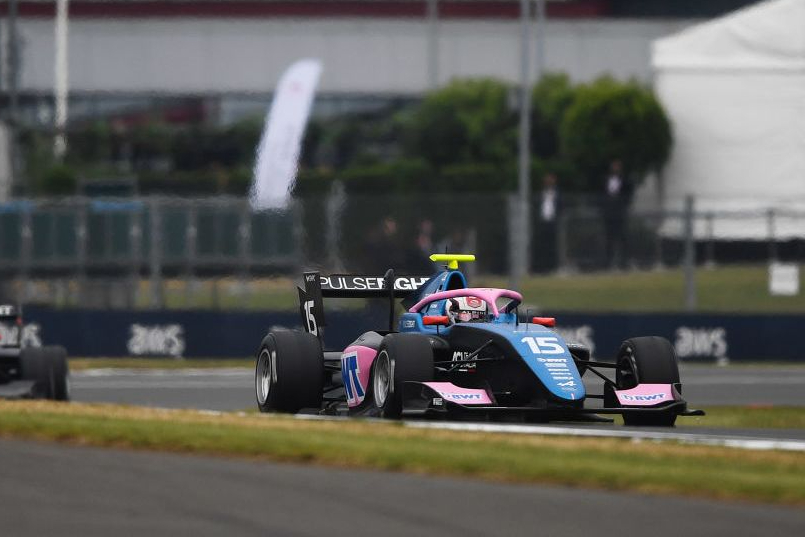 PA (4th): Mini looked like he had the ability to fight for the title as a rookie and started well in that respect. He was unlucky to lose a win in the opening feature race in Bahrain for a start infraction, and was imperious in Monaco with a performance that seemed to confirm him at the time as the most exciting prospect on the grid. Somehow, it all fell apart thereafter. It was a surprise that Hitech’s form dropped away as it did, but there were some mistakes on the young Sicilian’s side as well. Reuniting with Prema next year, for the first time since his 2020 Italian Formula 4 title run, would be a great opportunity.
PA (4th): Mini looked like he had the ability to fight for the title as a rookie and started well in that respect. He was unlucky to lose a win in the opening feature race in Bahrain for a start infraction, and was imperious in Monaco with a performance that seemed to confirm him at the time as the most exciting prospect on the grid. Somehow, it all fell apart thereafter. It was a surprise that Hitech’s form dropped away as it did, but there were some mistakes on the young Sicilian’s side as well. Reuniting with Prema next year, for the first time since his 2020 Italian Formula 4 title run, would be a great opportunity.
RG (6th): As one of the pre-season testing pacesetters, Mini was widely tipped for the title. Two poles in the first three rounds showed the speed was there. He was simply flawless in Monaco, taking pole, fastest lap and victory in the feature race, to go second in the standings. Yet he would only score points once in the remaining six feature races. So where did it all go wrong for Mini? There were costly mistakes such as lining up marginally outside his grid slot in Bahrain or the exclusion of all Hitech cars from Monza qualifying, as well as three retirements. While his race pace remained formidable, his qualifying speed deserted him after Monaco as the team seemed to lose its way, although the reversed-grid format did allow him to benefit from front row starts in Austria and Hungary. A likely move to Prema will make him a firm favourite for 2024.
6. Zak O’Sullivan BRITAIN Prema
2nd in standings, 119 points (4 wins, 1 pole, 3 fastest laps, 5 podiums) – TP 36%, QA 9.1 (=6th), LL 52 (3rd)
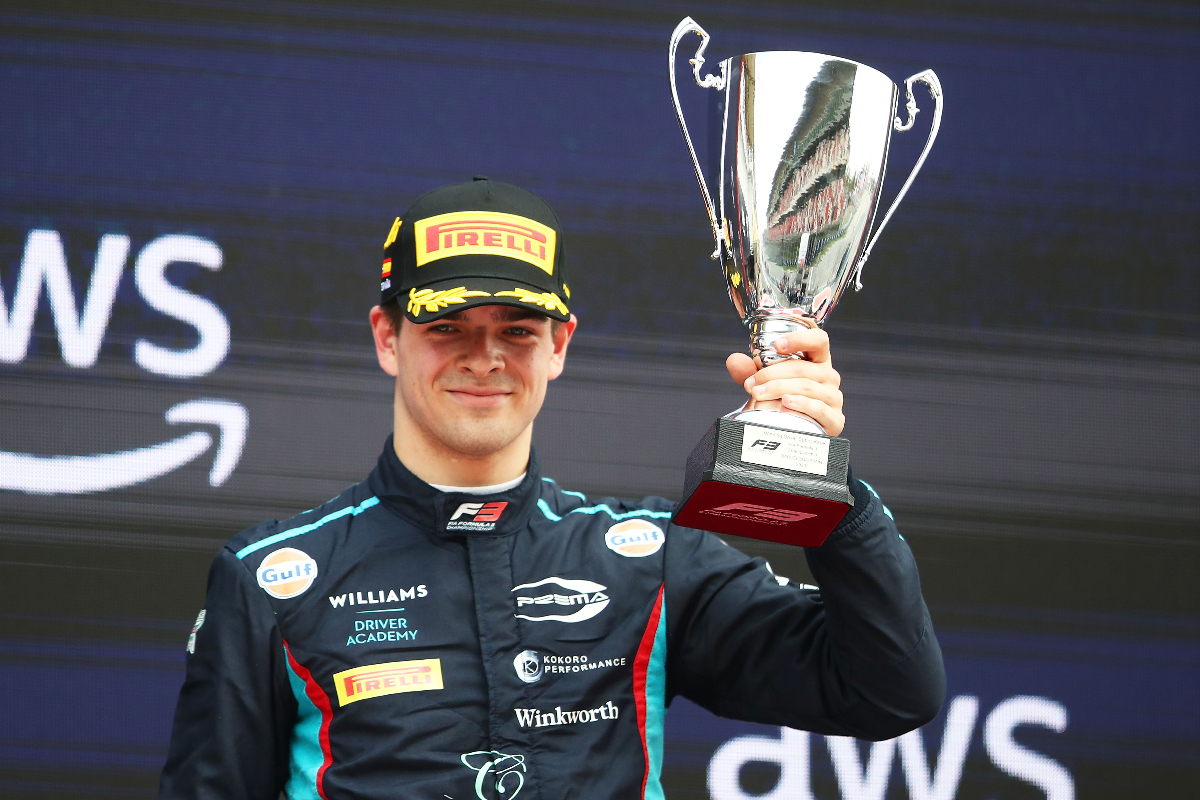 IW (5th): I put O’Sullivan in fifth place because he was either at the front on pace, not putting things together and leaving himself with grid spots way down the order, or he was the fifth or sixth fastest driver and maximising the results he could get from there. And that is kind of a strong position to be in to hoover up points, as shown by being championship runner-up despite nine non-scores. He had genuinely strong race pace too, with three fastest laps and in 12 out of 18 races he either finished higher or in the same place as he started. Admittedly his ability to move up the order somewhat deserted him once he made it into second in the standings, but he still ended up being the highest-scoring driver at the highest-scoring team.
IW (5th): I put O’Sullivan in fifth place because he was either at the front on pace, not putting things together and leaving himself with grid spots way down the order, or he was the fifth or sixth fastest driver and maximising the results he could get from there. And that is kind of a strong position to be in to hoover up points, as shown by being championship runner-up despite nine non-scores. He had genuinely strong race pace too, with three fastest laps and in 12 out of 18 races he either finished higher or in the same place as he started. Admittedly his ability to move up the order somewhat deserted him once he made it into second in the standings, but he still ended up being the highest-scoring driver at the highest-scoring team.
AA (8th): The O’Sullivan-Prema combination looked like a safe bet ahead of 2023, and they were successful with four wins, but overall they were far from what was expected after the Briton’s thrilling rookie season with Carlin. It took him too long to find the speed, especially in qualifying, and paid the price for it. His two feature race wins at the Red Bull Ring and the Hungaroring compensated for his nine non-scores, which is way too much for a second-year driver who is aiming for the title. Salvaging second in the standings and classifying as the best Williams junior are positives, but there is work to do to ensure he has a strong rookie Formula 2 season in 2024.
5. Taylor Barnard BRITAIN Jenzer Motorsport
10th in standings, 72 points (1 win, 3 podiums) – TP 67%, QA 13.6 (14th), LL 11 (10th)
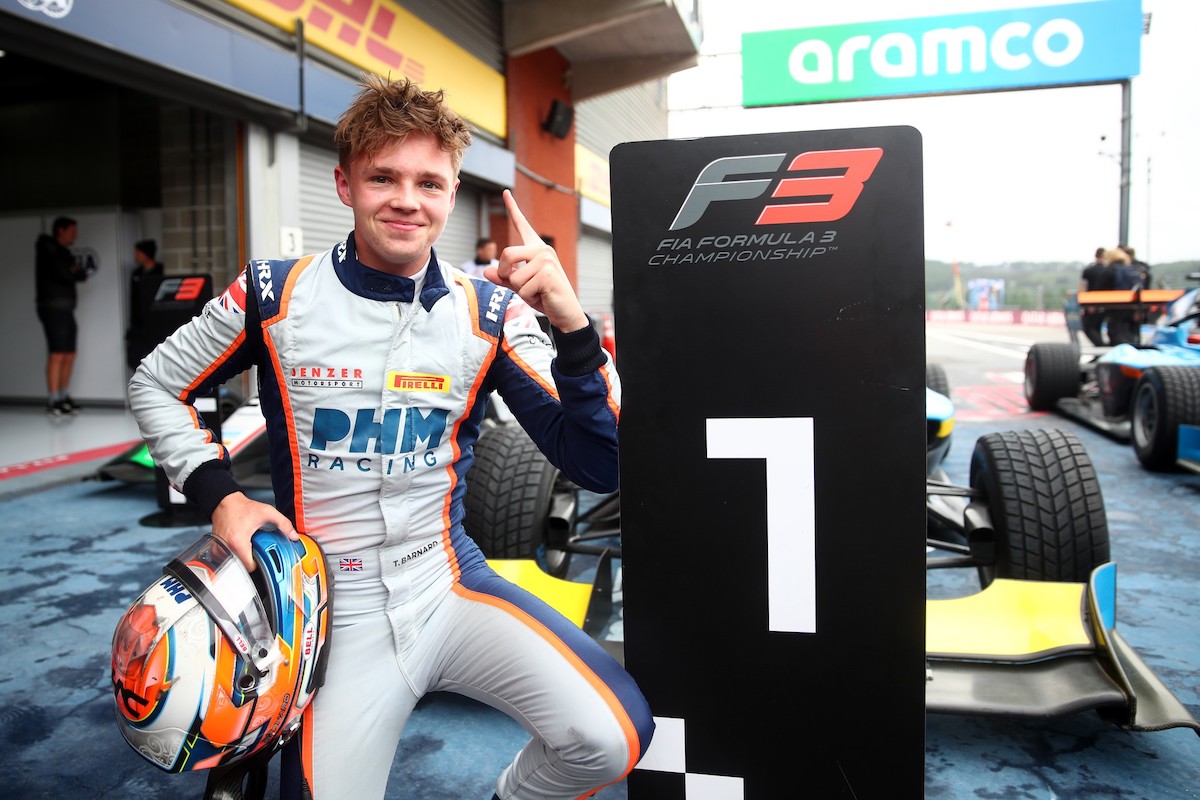 AA (4th): Barnard led Jenzer to its best season in the series since 2017, when it was still called GP3. The last two rounds only confirmed what had been seen earlier on: the Briton is as fast as anyone else in the 2023 F3 grid. He and his team worked hard and overcame a mid-season slump to end the year on a high. Tyre management struggles deprived them from better results in the first half of the year, which would have placed him way higher than 10th in the points table. Barnard is definitely one to keep an eye on in 2024. No matter where he ends up, he has the talent and work ethic to deliver.
AA (4th): Barnard led Jenzer to its best season in the series since 2017, when it was still called GP3. The last two rounds only confirmed what had been seen earlier on: the Briton is as fast as anyone else in the 2023 F3 grid. He and his team worked hard and overcame a mid-season slump to end the year on a high. Tyre management struggles deprived them from better results in the first half of the year, which would have placed him way higher than 10th in the points table. Barnard is definitely one to keep an eye on in 2024. No matter where he ends up, he has the talent and work ethic to deliver.
RG (8th): On loan to Jenzer Motorsport, in a deal put together before his backers at PHM took over Charouz Racing System’s entry, Barnard was the undoubted star of the last leg of the season. His haul of 56 points in the final two rounds matched that of Bortoleto, O’Sullivan and Aron combined, but he had scored just 16 prior to that. The turnaround owed as much to a change in Barnard’s mental approach as any performance improvement in the car. Despite lacking the budget of the bigger teams, Jenzer’s pace had been evident in 2022. Barnard’s victory at Spa came courtesy of an inspired (or fortuitous) pit call, but he still drove beautifully to hold off Christian Mansell’s challenge. And he could have won again at Monza but for a late safety car period. If, as expected, he moves to PHM for 2024, any title challenge will depend on his ability to drag the car up the order.
4. Franco Colapinto ARGENTINA MP Motorsport
4th in standings, 110 points (2 wins, 5 podiums) – TP 57%, QA 7.3 (3rd), LL 42 (4th)
 PA (3rd): In an ideal world, with his undoubted talent now recognised by Williams, Colapinto would have had a proper shot at the title in this, his second season in F3. But that always seemed a long shot, given MP Motorsport had not put any driver into that position previously, and so it turned out that way. Colapinto was the third-best qualifier on average, and second on single-lap pace, but while he consistently qualified inside the top 12, he never made it to the front row. What he did do was generally make the most of his opportunities, whether that was winning on Saturdays or making the podium on Sundays, which put him second in the points going into the final day of the season. Now he must make the F2 grid for 2024.
PA (3rd): In an ideal world, with his undoubted talent now recognised by Williams, Colapinto would have had a proper shot at the title in this, his second season in F3. But that always seemed a long shot, given MP Motorsport had not put any driver into that position previously, and so it turned out that way. Colapinto was the third-best qualifier on average, and second on single-lap pace, but while he consistently qualified inside the top 12, he never made it to the front row. What he did do was generally make the most of his opportunities, whether that was winning on Saturdays or making the podium on Sundays, which put him second in the points going into the final day of the season. Now he must make the F2 grid for 2024.
AA (5th): Colapinto came into the season with the ambitious target of claiming the title at the end of the year or at least making the top three, which is also normal for someone of his talent and after the rookie season he had. In the end, being crowned champion was never an option and he fell short of the top three by two points. It was not his fault though as MP’s car didn’t have much more to offer. He just maximised what he had and scored consistently. If any, he lacked a moment or two of brilliance to show why he should be on the F1 grid one day. However, there will be time for that in F2, as he has gathered enough support to keep moving up in the ladder, which was the bigger aim of the season.
3. Paul Aron ESTONIA Prema
3rd in standings, 112 points (1 win, 2 fastest laps, 4 podiums) – TP 34%, QA 5.9 (=1st), LL 7 (14th)
 AA (3rd): The 2023 FIA F3 season was more important for Aron’s career than it might seem, and he passed it with a high mark. After spending three seasons in FREC, it was crucial to prove he had learnt from past mistakes and had grown as a driver, and he did so. His rookie team-mate Beganovic seemed to have the edge in speed in the first half of the season, but it was Aron who was more consistent, which is key in FIA F3. Aron evolved consistently throughout the season and became stronger round after round. Only strategy prevented him from winning the Spa feature race, which he was dominating on the wet tyres at the beginning. His only notorious mistake was being too impatient at the Red Bull Ring while trying to overtake O’Sullivan. He had the pace to win it, but damaged its front wing and ended up out of the points. Had he won that race, the battle for the title could have turned out different.
AA (3rd): The 2023 FIA F3 season was more important for Aron’s career than it might seem, and he passed it with a high mark. After spending three seasons in FREC, it was crucial to prove he had learnt from past mistakes and had grown as a driver, and he did so. His rookie team-mate Beganovic seemed to have the edge in speed in the first half of the season, but it was Aron who was more consistent, which is key in FIA F3. Aron evolved consistently throughout the season and became stronger round after round. Only strategy prevented him from winning the Spa feature race, which he was dominating on the wet tyres at the beginning. His only notorious mistake was being too impatient at the Red Bull Ring while trying to overtake O’Sullivan. He had the pace to win it, but damaged its front wing and ended up out of the points. Had he won that race, the battle for the title could have turned out different.
IW (6th): Aron had four non-scores, with only the champion doing a better job on that front. But of the 14 races that Aron finished in the points, his average position was 4.9. He was almost too consistently off the podium when he had the pace and the potential, and most importantly a Prema-run car, to be on it. However like O’Sullivan, at the end of the day he did the important thing of scoring more points than almost all of his rivals to finish third in the standings. A remarkable statistical comparison is Aron had the joint highest qualifying average in the field, but only led seven laps all season. That was less than 13 other drivers managed.
2. Pepe Marti SPAIN Campos Racing
5th in standings, 105 points (3 wins, 2 poles, 2 fastest laps, 4 podiums) – TP 59%, QA 10.6 (10th), LL 71 (1st)
 PA (1st): Although Marti joined Fernando Alonso’s management firm over the winter, there was a question mark as to whether remaining with Campos Racing for a second year would enable him to substantially improve upon 26th place in his rookie campaign and demonstrate the potential he had shown in lower categories. The answer was resounding. At first his campaign was built on sprint race success from high reversed-grid placings, but his dominant drive at home in Barcelona changed that. The Campos package was clearly much-improved but for it and Marti to become the clearest challenger to the Trident-Bortoleto steamroller made him arguably the standout star of the season. Helmut Marko evidently thought so.
PA (1st): Although Marti joined Fernando Alonso’s management firm over the winter, there was a question mark as to whether remaining with Campos Racing for a second year would enable him to substantially improve upon 26th place in his rookie campaign and demonstrate the potential he had shown in lower categories. The answer was resounding. At first his campaign was built on sprint race success from high reversed-grid placings, but his dominant drive at home in Barcelona changed that. The Campos package was clearly much-improved but for it and Marti to become the clearest challenger to the Trident-Bortoleto steamroller made him arguably the standout star of the season. Helmut Marko evidently thought so.
AA (2nd): Marti and Campos developed a perfect bond which led them to exceed expectations in their second season together in the series. Strong from the beginning with sprint race wins at Bahrain and Monaco, driver and team unleashed all their potential to claim pole position and a dominant feature race win at Barcelona, enjoying a dream home round. At that point, Marti seemed to be the only one that could challenge Bortoleto for the title. In the end it was not possible, and misfortune in the last two rounds meant he finished fifth in the standings. Notwithstanding, Marti’s speed and maturity convinced Marko to sign him to the Red Bull Junior Team, a well-deserved reward for the step forward made from 2022.
1. Gabriel Bortoleto BRAZIL Trident
1st in standings, 164 points (2 wins, 1 pole 3 fastest laps, 6 podiums) – TP 53%, QA 5.9 (=1st), LL 34 (5th)
 RG (1st): An underrated performer in FREC, Bortoleto always had the potential to be the season’s surprise package particularly if Trident could maintain the pace advantage that had taken Zane Maloney to three straight feature race wins at the end of 2022. Two wins in two rounds gave his season the perfect launch, but it was a new-found consistency that really underpinned his title success. He was on the pace almost everywhere and managed to stay out of trouble while the performances of all his potential rivals swung from highs to lows. Under Alonso’s management, Bortoleto showed a professionalism, focus and outright speed that had only occasionally been evident before. Free to attack after anti-climactically wrapping up the title in a controversially-shortened qualifying session at Monza, Bortoleto showed his ability to fight for position in the races. Though there is no doubt that Trident again provided a fast car, Bortoleto exploited it masterfully to take a deserved title.
RG (1st): An underrated performer in FREC, Bortoleto always had the potential to be the season’s surprise package particularly if Trident could maintain the pace advantage that had taken Zane Maloney to three straight feature race wins at the end of 2022. Two wins in two rounds gave his season the perfect launch, but it was a new-found consistency that really underpinned his title success. He was on the pace almost everywhere and managed to stay out of trouble while the performances of all his potential rivals swung from highs to lows. Under Alonso’s management, Bortoleto showed a professionalism, focus and outright speed that had only occasionally been evident before. Free to attack after anti-climactically wrapping up the title in a controversially-shortened qualifying session at Monza, Bortoleto showed his ability to fight for position in the races. Though there is no doubt that Trident again provided a fast car, Bortoleto exploited it masterfully to take a deserved title.
PA (2nd): It would be impossible to deny that Bortoleto and Trident formed the strongest package in 2023. The Brazilian had flown under mine and many others’ radars in his earlier car racing career, but he looked rapid from his first tests in a Trident car that had also been going well underneath Zane Maloney last year. Bortoleto made impressive use of that pace to win in Bahrain and Australia, and never really seemed threatened after that. If there’s a criticism, it’s that he wasn’t further up in Monaco – but perhaps the low-grip track didn’t suit the Trident setup – or at Silverstone, where his team-mates finished one-two. But Bortoleto did what he needed to do to wrap up the title comfortably, including managing to progress forward in most sprint races without running into trouble.